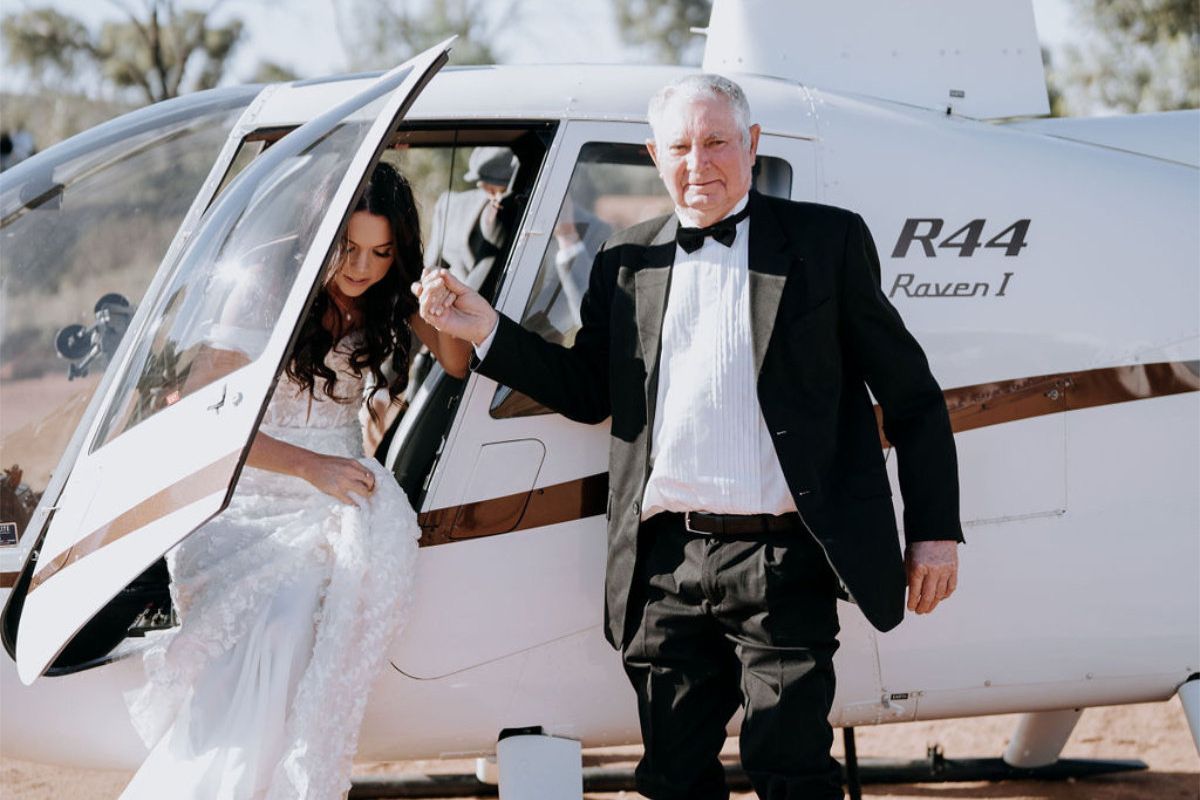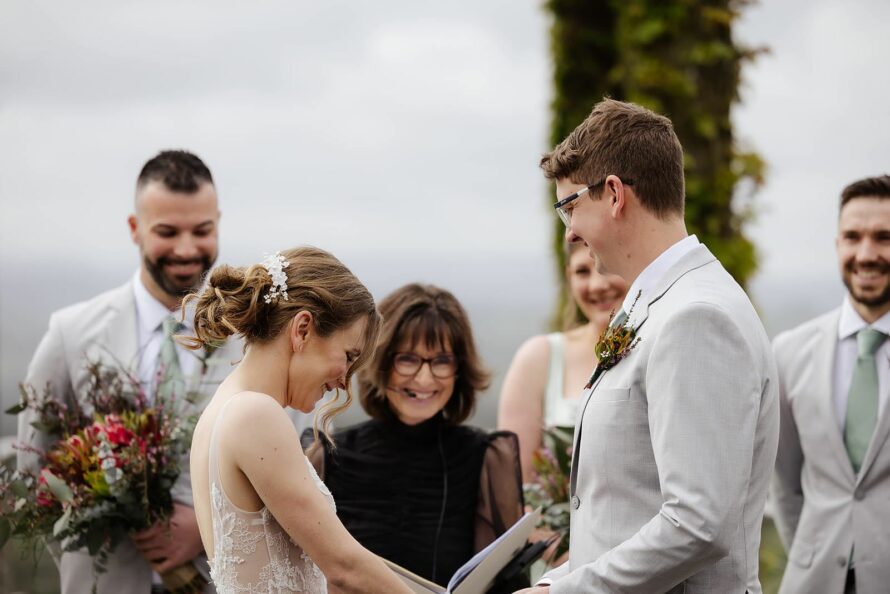How to write a father of the bride speech
Writing — let alone actually delivering — your all-important father-of-the-bride speech may seem daunting. With all eyes on you, it’s understandable you’d be nervous. But you needn’t be because, once the speech is written and the nerves are subdued, it’s a wonderful moment that can be a real highlight, especially for your darling daughter.

The beautiful Real Wedding of April and Alex.
Traditions of the father of the bride speech
The father of the bride speech is, usually, the first of the wedding speeches to be delivered, usually towards the end of the main meal. Traditionally, the father of the bride was the host of the wedding. Even weddings where he isn’t, the father of the bride speech usually still includes many host-like aspects such as welcoming the guests and thanking them for their gifts.
Of course, traditionally, the father of the bride also share some words of wisdom or marriage advice – and, sometimes, even a few tears!
Focus on the delivery
Standing centre stage, delivering a speech in front of your nearest and dearest on such an important occasion may seem like a difficult, perhaps, terrifying task.
But remember, there is no need to worry at all. You’re surrounded by your friends and family, all of whom want to see you do well!
They know how proud you are and are probably dying to hear what you have to say! Simply take a deep breath and try and enjoy yourself.
If you’re considering steadying your nerves with a little liquid courage, be sparing in how much you drink. You don’t want to have too much courage, after all. You want to enjoy the moment and you want your daughter – and your entire family – to be proud of your performance, not embarrassed by it.

Dane Michaels Studio photography
How to write the father of the bride speech
The hardest part of writing a good father of the bride speech is getting started.
A good tip is to break the speech down into headings. Under each heading, jot down some notes, ideas and emotions then expand on them.
Think about how you felt when your daughter was born, what it was like raising her as a child, some of her big milestones such as a graduation or a significant birthday. Then, attempt to put your emotions onto words.
As the speech starts to take shape, practice reading it out loud. Take note of how long it takes to read each section and try not to speak for longer than about five to seven minutes.
Part 1: The introduction
If you have the confidence to start your speech with a joke or humorous one-liner, this can really help to break the ice and calm your own nerves.
But keep it clean.
People are expecting a mature gentleman, not a larrikin – that’s the best man’s role!
If joking is not your thing, simply start by introducing yourself and mentioning how beautiful the bride looks.
Say a few words about the wedding day so far, and how perfectly everything has run and, if you have a few funny stories from the lead up to the wedding or the early part of the wedding day itself, you can include those at the start of the speech.

Father and daughter is a special bond | Theodore and Co.
Part 2: Welcome the guests
This is where your role as the father of the bride kicks in. Be sure to thank everyone for coming and give special thanks to those who have travelled to attend the celebrations.
Don’t forget to thank those who helped in the planning and organisation of your daughter’s big day and make sure you write down any names that you feel deserve a mention during this part of the speech.
Also, mention any significant family members or friends who are absent and, if you feel comfortable, those who may recently have passed away.
There are many great ways you can honour deceased loved one’s wedding ceremony. Here, for example, are 10 heart-warming ideas to honour any mothers who may have passed away.
Part 3: Now, it’s all about your daughter
This is the highlight of any father of the bride speech – and everyone’s waiting to hear it.
It’s not often you get to discuss your daughter’s many qualities and achievements so publicly, so make the most of it and indulge yourself. Make sure you compliment her; tell her how wonderful she looks and how proud you are of her. Don’t worry, it’s OK to gush about your darling daughter.
Try to talk a little about your daughter’s early years, perhaps tell a funny story or two about when she was like growing up. Feel free to tease her about some of the things she has done but be kind and don’t say anything that you know will really embarrass her.
Tell a story that reveals her personality: how strong, tough, creative, kind she is, perhaps? Or her love of animals or sports.
Finally, talk about when she met her new husband, making sure you tell the story in a positive way!
This will lead you nicely into the next part.

A father of the bride’s speech is an important part of the wedding | JS Photography
Part 4: Don’t forget the son in law or daughter in law
Here, it is customary for the father of the bride to welcome the groom (or, in the case of a same-sex wedding, the other bride) into his family, and to express his happiness at the new connection between the two families that the marriage will bring.
Talk about your first encounter with the groom. Even if the first impression was not positive, it may be fun to mention it, as long as you follow up with how fond of him you are now – and say it
Depending on your relationship with your new son-in-law, it’s probably fine to poke (a little) fun at him, and to joke about what he is getting himself in for marrying your daughter.
Other anecdotes that work well include the first time you realised your daughter was in love with him and your reaction to their engagement.
Think of positive qualities about the groom that will make him a good husband and ways that he has made your daughter happy.
Part 5: Words of wisdom
At the end of your father of the bride speech, you should congratulate the happy couple on a wonderful wedding, and express your confidence in their future happiness together.
Traditionally, your closing should also contain some words of wisdom about life and marriage. This might include tips on how to have a happy marriage and things that are important in life.
This could be humorous or tongue-in-cheek.
Part 6: Toast
Finally, propose a toast to the bride and groom and have all the guests raise their glasses to the happy couple.
There you go. You’ve done it! It wasn’t that hard, was it?


